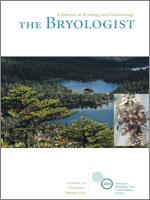The Hypogymnia austerodes group is an assemblage of mostly boreal and arctic-alpine lichens traditionally comprising three wide-ranging sorediate and/or isidiate species, H. austerodes, H. bitteri and H. subobscura. Here we describe four additional members of this group – H. dichroma sp. nov., H. protea sp. nov., H. salsa sp. nov. and H. verruculosa sp. nov. – which have until now been treated within H. austerodes s. lat. Our new species are primarily epiphytic, and are currently known only from Cordilleran western North America. They differ from other members of the H. austerodes group both morphologically and in their virtually consistent production of apinnatic acid. Hypogymnia protea is by far the most variable of the new species, uniting two putative taxa here designated as morphs “disjuncta” and “tessellata”. Reliable discrimination of the segregate species requires careful attention to their vegetative reproductive structures, which are described in detail. A key to all treated species and their recognized morphs is provided. Earlier reports of H. farinacea from western North America appear to be based on schizidiate material of H. protea morph “tessellata”. Whether H. farinacea actually occurs in North America remains an open question.
How to translate text using browser tools
1 March 2012
Four new sorediate species in the Hypogymnia austerodes group (lichens) from northwestern North America, with notes on thallus morphology
Trevor Goward,
Toby Spribille,
Teuvo Ahti,
Celia J. Hampton-Miller
ACCESS THE FULL ARTICLE

The Bryologist
Vol. 115 • No. 1
Spring 2012
Vol. 115 • No. 1
Spring 2012
Apinnatic acid
British Columbia
Lecanorales
Lichens
Parmeliaceae
vegetative propagules




